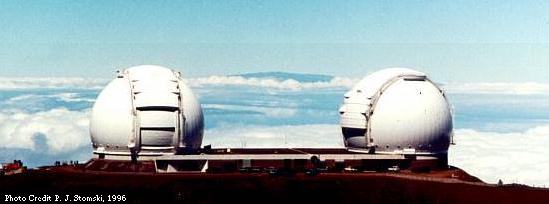Brought to you by: Jason X. Prochaska (UCSC)
in conjuction with: Arthur M. Wolfe (UCSD) David Tytler (UCSD) Sara Ellison (ESO) and Max Pettini (Cambridge)
Last Updated 05/13/03

Quick LinksAtomic Data (v0.5) and Atomic ReferencesIndividual Abundance TablesSummary Abundance TablesPapers and References |
I. Description of the Abundance DatabaseThis set of web pages will serve as an archive for damped Lya chemical abundances. My motivation for establishing and providing upkeep on this site is twofold: (1) invariably I find errors in my analysis or in the atomic data as published in my papers and I wish to correct them sooner than my next publication; (2) gathering all of the data files into one place will probably be of use to other folks.At the very least, I intend to present tables and the like for all of the data I have at my disposal. I also wish to encourage people to submit their own results with the aim of establishing one uniform database for the whole community. Wouldn't it be nice if the ISM and stellar abundance communities did the same? ** If you use data from this database be sure to reference the appropriate people. And I don't just mean my papers. Check the info in the Individual Abundance Table list.**
II. Accessing the Abundance DatabaseFor my convenience and hopefully yours, each damped Lya system has 3 unique tables associated with it:
**It is worth stressing that all of the abundance measurements assume the atomic data given by this file with references given in this file. III. Adding to the Abundance DatabaseFirst off, if you have noticed an error in my measurments or in the atomic data I am using or if you know if new atomic data which is better than what I am using please email me at hiresdla@kingpin.ucsd.edu. I might not respond and I might ignore your suggestion, but I promise to read them all on a semi-regular basis.Hopefully, those of you in the community who are making similar measurements (preferably on new damped systems) might like to add to this database. Simply send me the 3 tables that I present for each damped Lya system and I'll add them in. To maintain the homogeneity of the database I strongly recommend that you use the AODM and I require that you use the SAME atomic data that I am using. If you think your atomic data is better, let me know why and I'll likely revise mine. Please also send a brief description of your analysis and a reference to your work. e-mail: hiresdla@kingpin.ucsd.edu modified 05/13/03 |